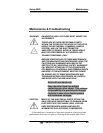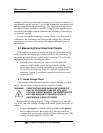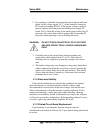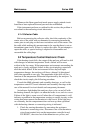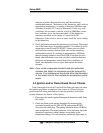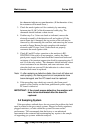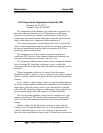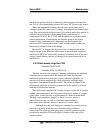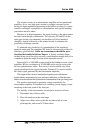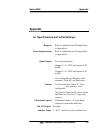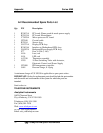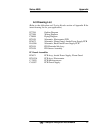
Series 4060 Maintenance
Teledyne Analytical Instruments 71
5.5 Printed Circuit Board Descriptions
The electronics circuitry of the analyzer is designed with the latest
integrated circuit technology. The individual circuits which are required
to process the incoming signal and condition it to provide the various
outputs, alarms, indicators, etc.,
5.5.1 Flame Guard and Anode Power Supply PCB
Schematic No. B-74672
Assembly Dwg. No.B-74671
Anode Power Supply: The high voltage anode power supply
components are mounted on the flame guard and anode power supply
printed circuit board. High voltage regulation is achieved through the
use of zener diodes. The simplicity of this circuit’s design can be
attributed to the extremely low current demand of the anode circuit. The
positive output voltage is nominally 125 volts. Output tolerance is ±10
volts from the specified 250 volts, due to variation in components from
unit to unit.
Flame Guard Circuit: A thermistor-controlled, comparator circuit is
employed to operate relays in the event of a flame-out condition. A
panel indicator light is turned on by the relay to alarm personnel that a
flame-out condition has occurred.
The controlling thermistor is located within the upper section of the
cell assembly. The electronic circuit components and relays are mounted
on the same printed circuit board as the anode power supply. the
indicator light on the control panel.
The thermistor is located in the circuit so that it controls the input of
comparator. The circuit is factory set so that with the flame burning, the
output of comparator is low. The microprocessor senses the low input
and in turn sends 5VDC to turn on Q1, this holds the relay energized.
When energized, the relay extinguishes the Flame Out indicator light.
Conversely, if the flame goes out, bias to the switching transistor is lost,
the relay drops out, and the Flame Out light receives power through
normally closed contacts.
During ignition, the flame heats the thermistor, holding the relay in
the energized condition and the indicator light off. If the Flame Out light
comes on as the analyzer returns analyzing mode, then the flame is not
burning, and the ignition procedure must be repeated.





